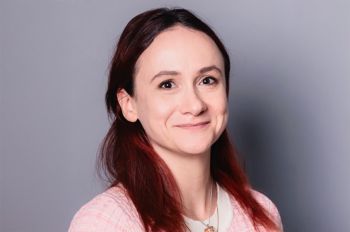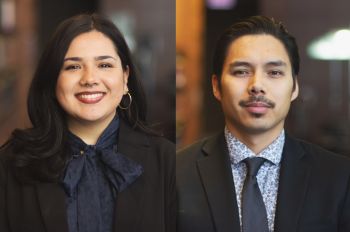How Old Are You? Chicago-Kent Professor Explores Varied Legal Concepts of Age

Legally speaking, how should one define their age? The number of years from your date of birth? The strength of your heart? Or even how you feel?
In his latest upcoming publication, Chicago-Kent College of Law Associate Professor and Associate Dean Alexander Boni-Saenz explores several ways the law could measure your age—and the virtues and vices of each.
His paper, titled “Legal Age,” which will be published in the Boston College Law Review in spring 2022, centers on the existing “chronological” (year-counting) standard as a touchstone to measure other models, in order to—at the very least—apply greater scrutiny to current legislation.
“Chronological understandings of legal age have been hegemonic in the law,” Boni-Saenz writes, further noting, “Age is ubiquitous in the legal landscape, appearing in the Constitution, anti-discrimination statutes, criminal laws, and public benefits programs.”
But he adds, “As scientists discover various biomarkers of human aging and individuals openly embrace more fluid identities, this chronological definition will soon have to compete with biological and subjective alternatives.”
The competing models should be examined, Boni-Saenz says, based on such criteria as how expensive they are to administer, how well they promote individual autonomy, and how they improve the accuracy of the legal system.
He thus begins his article with an analysis of the chronological standard. The pros are somewhat obvious, Boni-Saenz notes: chronological-based laws are very easy to administrate.
“It’s so easy to use, to create [and monitor] age-based legal rules. We know what the cut-offs are,” Boni-Saenz says.
But they also have limitations. The legal touchstones of aging—when one retires or faces increased scrutiny for use of a motor vehicle—can change as general populations become more or less healthy. A legal system that relies solely on chronological age at times does not take health or biology into account.
And moral standards often change as well. “In the past in the United States, the marriage age was incredibly low, in the early teens. This stuff clearly changes over time,” Boni-Saenz says, noting some states are now reviewing their marriage laws to reflect current standards. He also notes the frequent battles in criminal law over when someone should be tried as an adult.
So if not chronological age, what then? Boni-Saenz next explores a biological model of measuring age: in short, the state of one’s physical body.
Such a legal model wouldn’t necessarily require less record keeping. And Boni-Saenz says it might be problematic to implement a “biological age” standard prior to puberty or even into the early 20s, when mental maturity and decision-making capabilities comprise the conceptual basis behind many age-based laws.
But considering how the elderly are growing increasingly healthy later in life, such a model may be useful in late-life legislation, such as laws governing driver’s licenses, for instance.
Boni-Saenz also notes that a biological model may also be more racially equitable. Since in the aggregate members of distinctive racial groups have different mortality and morbidity rates, some minorities may benefit from legal standards that recognize this, potentially enabling them to do things like legally retire earlier.
Still, such a standard could have setbacks, Boni-Saenz warns.
“If you moved away from the chronological model, it would increase litigation. You’d have to change the entire system of age-based law; your social security cutoff would be gone. You’d have to change the whole legal landscape,” he says.
The final model Boni-Saenz explores is the most subjective; in fact, that’s why he labels it the “subjective model” of aging—in other words, judging a person’s age by how they feel.
“The main virtue of the subjective model is it fulfills the autonomy of a person, allows them to determine what age they want to be seen as by others,” Boni-Saenz says.
Again, allowing a “subjective model” would be problematic for early-life standards: a 6-year-old who feels old enough to drive a car probably shouldn’t be given the legal right to do so.
But more than the other models, the “subjective model” could take chronological age out of the law. Retirement would not be collected at a certain age, perhaps to be replaced by a universal benefit.
Boni-Saenz notes that such a model would be the most disruptive and would require some guidelines.
“You’d have to have people commit to an age for a certain time, or there’d be tons of fraud issues,” he says.
When talking about potential ways to change to the current system, Boni-Saenz notes there are several.
The most radical would be to simply abolish age-based law. A median step would be “disaggregation,” or selectively using different measures of age in different contexts, depending on which model would make more sense.
The most modest change would be “calibration,” or keeping the chronological standard, but updating it to make it more reflective of what the cutoffs are supposed to legally represent.
“Even if we might not favor an alternative definition of legal age in the final analysis, a consideration of these alternatives reveals the particular strengths and weaknesses of the chronological definition,” Boni-Saenz concludes. “In addition, it prompts us to think more deeply about the large landscape of age-based law that regulates our lives.”
Photo: Associate Professor of Law Alexander Boni-Saenz




